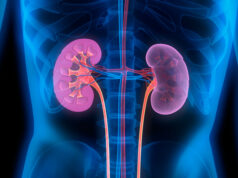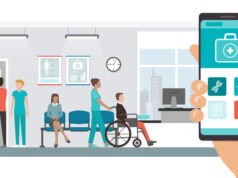Emergency physicians working across the U.S. have begun to see their first cases of Covid-19. The picture varies from city to city as hospitals prepare for an influx of cases due to the pandemic.
So far, at least 115 deaths across the U.S. had been attributed to Covid-19 as of Wednesday, according to data compiled by Johns Hopkins University. Most cases are mild, but some patients have experienced severe pneumonia as they face the disease. In the Seattle area, where the first outbreak was reported at a nursing home operate by Life Care Centers of America, many hospitals are seeing the first wave of the pandemic.
“We’ve seen a surge in respiratory cases, but fortunately a decline in other cases,” said Dr. Gregg Miller, CMO of emergency medical staffing company Vituity and an emergency medicine physician practicing at Swedish Edmonds, a 217-bed facility north of Seattle.
As of Tuesday, Miller said the overall patient volume was about the same, with some who would have otherwise come in opting to stay home. Physicians haven’t yet had to work extended hours, but they face a shortage of protective equipment and ICU beds.
“In my last shift, I didn’t have a face shield,” he said. “We’re definitely feeling the impact, and I don’t think we’ve seen the worst of it yet.”
As patients spill out of ICUs, Miller said the hospital had begun using a step-down unit, normally reserved as an intermediary between the ICU and general medical-surgical wards, to care for critically ill patients.
Part of the challenge with the virus is that the sickest patients require ventilation for a prolonged amount of time, meaning that hospitals can’t turn around ICU beds quickly.
Miller described the situation as a “slow-moving tsunami.”
“It’s not like we’re seeing tons and tons of critically ill people coming in right now,” he said. “Each emergency department is seeing a few more people every single day. When you add that up day over day, over weeks, you’ve got a slow-moving tsunami that completely overwhelms a hospital’s capacity.”
In addition to setting aside more space for the sickest patients, Miller said hospitals are training up more staff to be able to care for them. That might mean training inpatient physicians, anesthesiologists, and other specialties to help manage ventilated patients.
“Maybe they can transfer that experience to managing these critically ill patients,” he said. “We’re starting to have conversations about what that might look like.”
In other cases, hospitals are looking at creative ways to use telehealth tools to minimize face-to-face contact. That might mean using phone calls to help manage hospitalized patients, and connecting them to loved ones through digital tools.
“I saw the first potential Covid patients in our ED a couple of weeks ago. They had traveled from one of the affected countries at the time,” Miller said. “They came into our ED. We chatted with them and placed them in an isolation room. From there, some of the conversations I had with them were over the phone.”
More patients going online
Further south, where there are fewer cases, hospitals have gotten quieter. Dr. Blake McKinney, an emergency physician at Sutter Roseville Medical Center in Sacramento and CMO of telehealth startup CirrusMD, said patients have been opting to call in rather than come into the hospital. He said overall visits were down, but with more people coming in with concerns about upper respiratory symptoms, fevers and coughs, as well as people seeking work notes.
“Before the virus, the more familiar option was to go into the neighborhood urgent care, emergency room, or even waiting to see your doctor. But now, people are waiting twice before going into these places because there’s a new infection out there and it’s at the top of everybody’s mind,” he said.
McKinney said at this point, most hospitals and urgent cares have devised a right and a left pathway for patients, to keep patients who might have Covid-19 from infecting others. So far, the cases he’s worked on have been mild.
“We try to quickly differentiate between someone who’s there for a dislocated shoulder and someone who’s there for a fever and a cough,” he said.
On the telemedicine side, McKinney said CirrusMD had seen a sharp increase in encounters, both of people with ordinary illnesses and potential Covid-19 cases. The company is seeing a more than 150% increase in daily encounters on its platform.
“The greatest opportunity that telemedicine provides in this pandemic is the answer to the question, ‘should I go in?’” McKinney said.
Over the phone, McKinney asks many of the same questions as he does in clinic: Are you short of breath? Have you had fever? Who else is sick around you? And so on.
But he still runs into the same problem as many others: limited testing. Even if patients are swabbed for a test, a shortage in reagents has led to limited availability in which ones can be processed.
“The reality of the world, the testing situation right now is like there are a lot of printers out there without ink,” McKinney said. “I wish we had widespread testing because information is valuable.”
Though McKinney wears full protective equipment—he said he dons “spacesuit-looking” personal protective gear while working the fever and cough shift in the ER—he’s aware of the risk of exposure. If he were to get a fever and cough, McKinney said, he’d be in self-isolation at home.
“I’ll continue to help people on telemedicine,” he added.
Future hopes
For other healthcare providers outside of Seattle, Miller said to expect a long road ahead. But he’s also hopeful that some of the measures groups have taken to combat the virus will last in the long run, whether that’s better cooperation between competitors or streamlining telemedicine.
“It’s a crisis like this that helps us appreciate that medicine — it’s a calling, a mission — not just a job. People have been rising to that mission,” he said.
Talking to a friend who is a physician in China, Miller shared advice for his colleagues:
“Take a couple of big deep breaths and remind yourselves that you’re going to get through this.”
Photo credit: Donald Miralle, Getty Images







